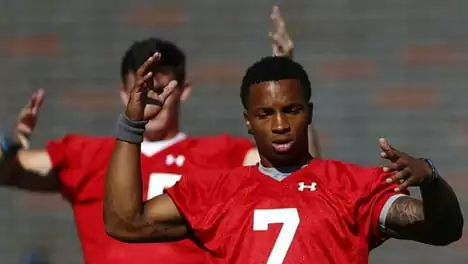What’s there in a color? The future of a college football player. Literally!
The type of shirt color matters a lot when it comes to college football recruitment. Let’s take a closer look at what each status means.

What Is a Redshirt, Gray Shirt, and Blue Shirt in College Football?
Fans of college football might be scratching their heads when it comes to decoding the designations of being a redshirt, blue shirt, or gray shirt. Each of these statuses is important for football programs and the players they have, as well as those they’re aiming to recruit for future seasons.
At the basic level, most football players in college are classified by their year – freshmen, sophomores, juniors, and seniors. However, shirt designations add another wrinkle to their status, beginning with redshirting. The term is used for a player who’s on scholarship yet opts not to play in any given season, allowing them to keep a year of eligibility for the future.
Brockton’s Monteiro transfers college football career after redshirt year at Pittsburgh https://t.co/F0H1apgS3m
— The Enterprise (@enterprisenews) April 27, 2025
According to a post from SBNation, it first came about thanks to a University of Nebraska player in the 1940s who chose to wear a redshirt with no number as a sophomore in order to get physically better to play.
The practice of redshirting is common for incoming freshmen, transfers from other programs, and those sitting out for medical reasons. Academic redshirting is also common, where a player wouldn’t be able to play due to poor grades. A recent revision by the NCAA also allows those redshirting to play in the postseason if they wish.
Full Breakdown of NCAA Eligibility and Recruiting Terms
Being a gray shirt in college football means that a player has been offered a scholarship to enroll at the beginning of the second semester. This allows them to have five years of eligibility and enroll somewhere else for that first semester before transferring.
Most schools utilize grayshirting to compensate for oversigning or not having enough roster slots for their commitments. The status comes into play mainly around National Signing Day.
KEEP READING: What Do College Football Coaches Actually Do? Inside the Head Coach’s Daily Role
Being a blue shirt is a recent development. Schools can place “unrecruited” athletes on scholarship to count them against the total number of scholarship athletes for the next year. The guidelines for this status require the athlete to make unofficial visits to the school, meaning that a coach hasn’t extended the offer to visit. Tennessee has been regarded as one of the programs that has made good use of this policy.
College Sports Network has you covered with the latest news, analysis, insights, and trending stories in football, men’s basketball, women’s basketball, and baseball!

